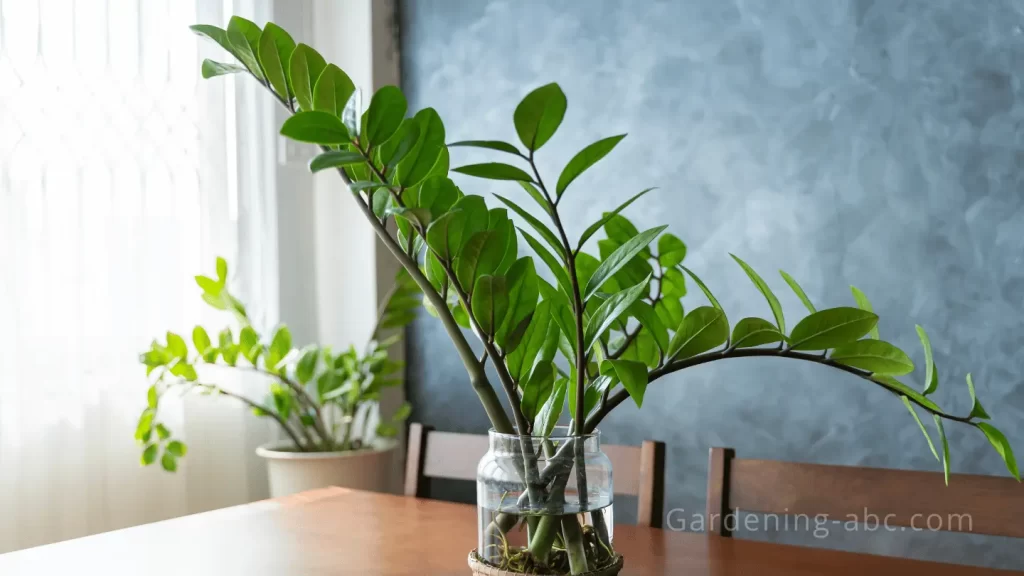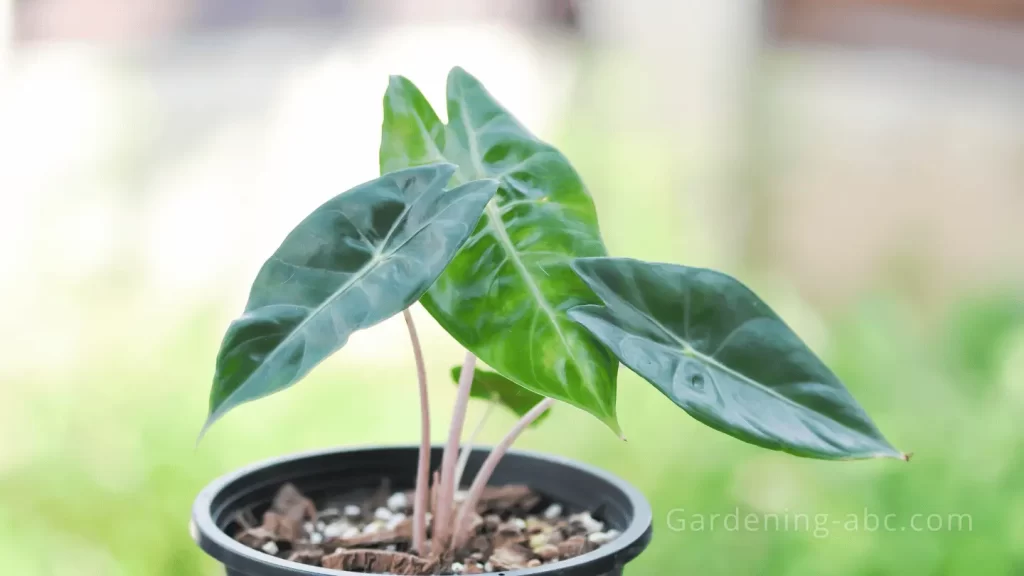We use affiliate links to run our site. When you buy through links on our site, we may earn an affiliate commission, without any added cost to you. Learn more
Are you ready to explore the secrets of shimmering plants with a glossy allure? Join us as we dive into the captivating world of waxy leaf plants. Finding low-maintenance plants that add elegance to any space can be challenging.
In this blog post, we will reveal the magical allure and practical benefits of these botanical marvels. We will also explore their characteristics, care methods, and how they can enhance your space effortlessly.
We aim to showcase the unique traits and care essentials of waxy leaf plants. By the end, you will have a solid understanding of their distinctive features and how to care for them.
Get ready to discover the resilience, beauty, and secrets behind the glossy allure of waxy leaf plants. Join us as we unveil the mysteries of waxy leaf plants.
Table of Contents
Why Are Waxy Leaf Plants Special?
These plants stand out for their glossy leaves coated with a waxy layer. This shine isn’t just for looks; it helps the plants retain moisture and survive in harsh conditions. Their adaptability makes them a perfect addition to any indoor or outdoor garden.
Key Features:
- Waxy layer: The most distinctive feature of waxy leaf plants is their glossy, waxy leaves. This characteristic sets them apart from other houseplants and adds a unique touch to any space.
- Drought resistant: Due to the protective waxy layer, these plants can retain moisture and survive in dry conditions. This makes them ideal for those who struggle with keeping plants alive.
- Low maintenance: With their ability to withstand drought and adapt to various lighting conditions, waxy leaf plants are low maintenance. They require minimal care and attention, making them perfect for busy individuals.
- Different Shapes and Sizes: From small succulents to broad-leafed shrubs, these plants come in various sizes and shapes.
- Medicinal Properties: Some species of waxy leaf plants, like Aloe Vera, have medicinal properties and are used to treat various ailments.
- Purify the Air: These plants can improve air quality by removing toxins and pollutants from the environment.
- Symbol of Wealth: In Feng Shui, waxy leaf plants are believed to bring wealth and prosperity, making them a popular choice for home decor.
The Ideal Growing Conditions:
For these plants to thrive, it’s essential to provide them with suitable conditions.

Sunlight:
- Bright but Indirect Light: Most waxy leaf plants prefer bright light, but some, like ZZ plants, can tolerate low-light conditions. Avoid direct sunlight, as it can damage the leaves.
Temperature:
- Mild Temperatures: Keep them in temperatures between 65°F to 85°F (18°C to 29°C) for best growth.
- Avoid Extreme Changes: Waxy leaf plants prefer stable temperatures and can suffer from sudden temperature fluctuations.
Soil:
- Well-Draining Mix: Use a mix of potting soil, perlite, and sand for good drainage.
- Slightly Acidic: A pH level of 6.0 to 7.0 is ideal for these plants.
Watering:
- Allow Soil to Dry: Waxy leaf plants are drought-resistant, so it’s best to let the soil dry out between waterings.
- Avoid Overwatering: Too much water can lead to root rot and other issues.
- Mist Leaves Occasionally: These plants appreciate humidity, so misting the leaves can help replicate their natural environment.
How to Decorate With Waxy Laef Plants
Waxy leaf plants are not only practical but also add a touch of sophistication to any space. Their shiny leaves and unique shapes make them a popular choice for interior design. Some ways to incorporate them into your decor include:
- Create a Focal Point: Use a large waxy leaf plant as a statement piece in any room.
- Mix and Match Shapes: Combine different shapes, sizes, and textures for an interesting display.
- Hang Them Up: Hanging baskets with trailing waxy leaf plants can add dimension to any room.
- Add Color: Some waxy leaf plants, like Croton, have vibrant leaves that can add a pop of color to your space.
Caring for Waxy Leaf Plants
Taking care of these beauties isn’t too complicated.
Pruning:
- Remove Dead Leaves: Trim dead or yellowing leaves to keep the plant healthy.
Repotting:
- Give Space: When they outgrow their pots, move them to slightly larger ones with fresh soil.
Pest Control:
- Stay Alert: Look out for pests like mealybugs or spider mites and use natural remedies to keep them at bay.
Popular Waxy Leaf Plant Varieties


Let’s explore some famous waxy leaf plants loved by plant enthusiasts:
| Plant Name (Scientific Name) | Distinctive Features | Care Tips |
|---|---|---|
| Rubber Fig (Ficus Elastica) | Large waxy leaves, various colors, grows up to 6-10 ft indoors | Indirect light, dry soil in winter |
| Swiss Cheese Plant (Monstera deliciosa) | Large heart-shaped leaves, develops holes as it matures | Easy maintenance, indirect sunlight |
| Zanzibar Gem (Zamioculcas Zamiifolia) | Dark green leaves, tolerates neglect, suitable for low light | Thrives indoors, occasional watering |
| Bromeliad | Unique texture and colors, produces striking inflorescence | Suitable for both indoor and outdoor, higher humidity in hot conditions |
| Heartleaf Ice Plant (Mesembryanthemum Cordifolium) | Thick fleshy leaves, bright flowers, magenta blooms that open in the afternoon | Watering a couple of times a week, slow-release fertilizer in spring |
| Hoya Carnosa | Long slender vines, thick leathery leaves, white and pink star-shaped flowers | Bright indirect light, occasional watering |
| Echeveria Succulent | Rosette-shaped, colorful leaves, easy maintenance | 4-5 hours of direct bright light, well-draining soil |
| Jade Plant (Crassula Ovata) | Thick oval-shaped leaves, succulent nature | Bright light, infrequent watering |
| Aloe Vera | Thick, spiky leaves, gel-filled for medicinal use | Bright light, well-draining soil, sparing watering |
| Peace Lily (Spathiphyllum) | Dark glossy leaves, white flowers, air-purifying | Low to medium light, regular watering when soil is dry |
Personal Experiences and Delightful Moments
Cultivating waxy leaf plants is a rewarding journey filled with pleasant surprises. I remember nurturing a Hoya plant from a small cutting to witnessing its breathtaking blooms after months of care and patience. It taught me the importance of consistency in care and the joy of seeing a plant flourish under your attention.
The Final Thought:
To sum up, waxy leaf plants are resilient and elegant botanical wonders. Their glossy allure is not superficial; it represents their adaptability and enduring charm. They are not just plants; they are companions that add a touch of nature’s elegance to our surroundings.
Now, take a moment to reflect on these fascinating plants. Consider how they can complement your indoor or outdoor space. What unique qualities draw you to these plants, and how can you integrate them into your own botanical haven?
Remember, our exploration of waxy leaf plants does not end here. There is always more to discover and explore. In our future articles, we will delve deeper into specific species, and their care techniques.
Before you go, consider bringing a waxy leaf plant into your life. Choose one that resonates with you. Begin your nurturing journey and watch as it thrives under your care.
Thank you for joining us. Happy gardening.
Amazon and the Amazon logo are trademarks of Amazon.com, Inc, or its affiliates.


Hi there! My name is Prasenjit and I’m an avid gardener and someone who has grown a passion for growing plants. From my hands-on experience, I have learned what works and what doesn’t. Here I share everything I have learned.





